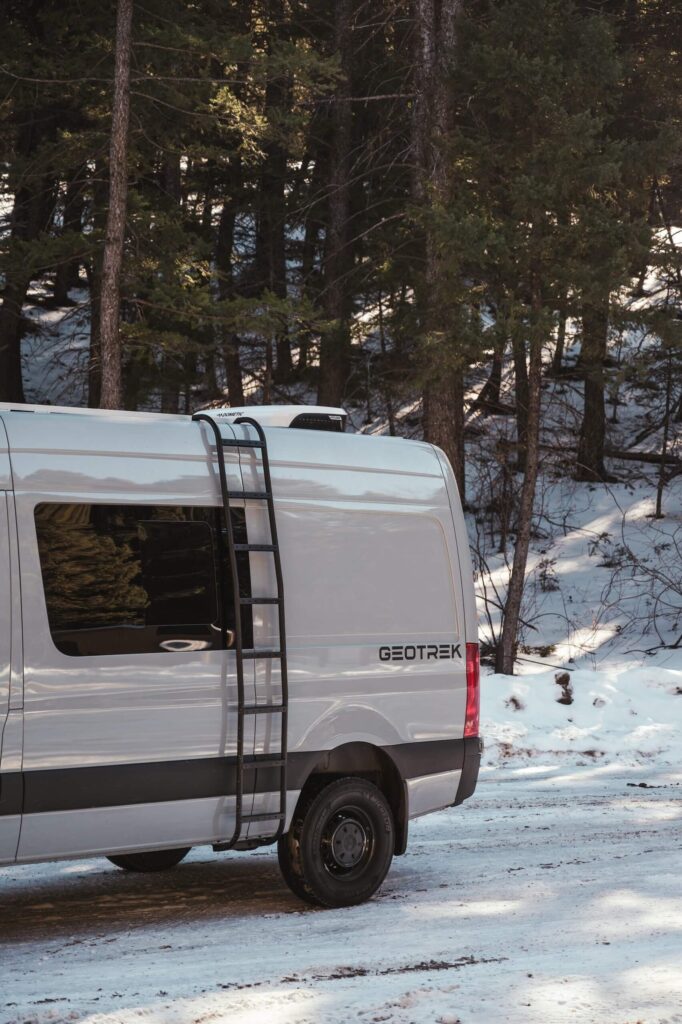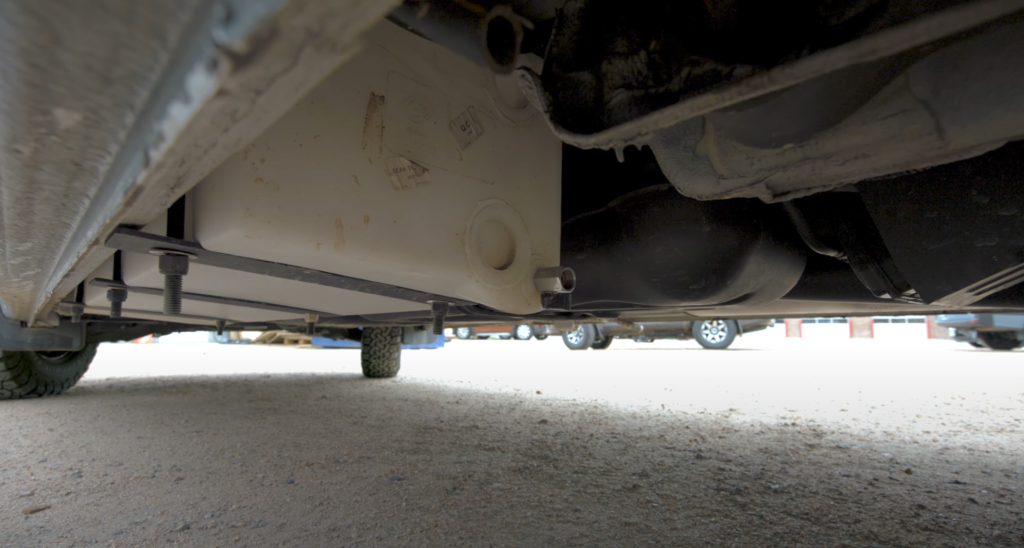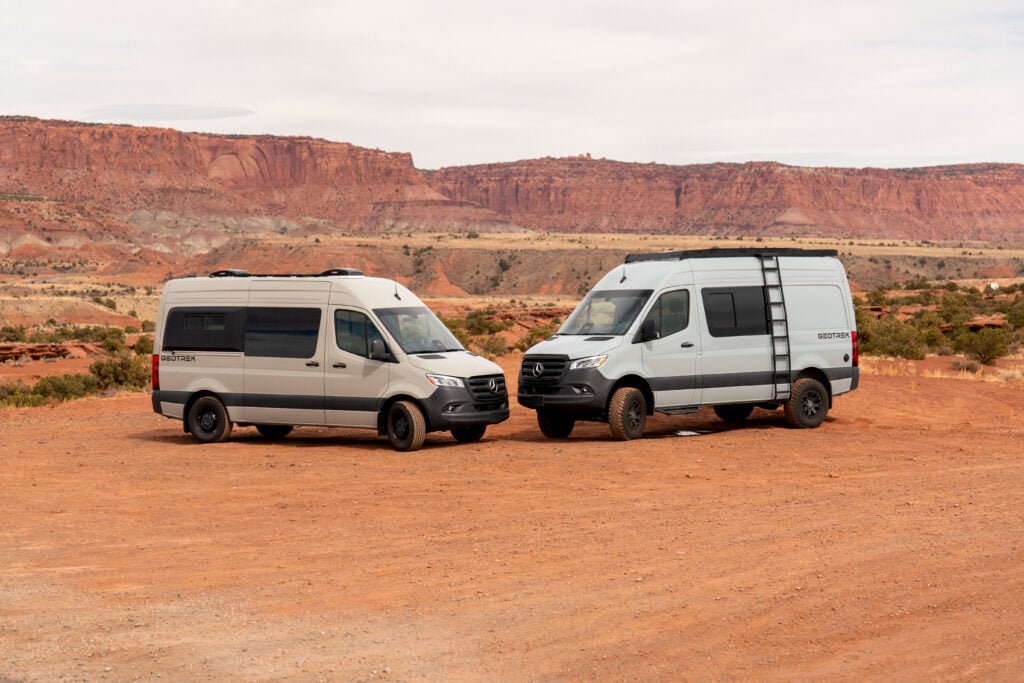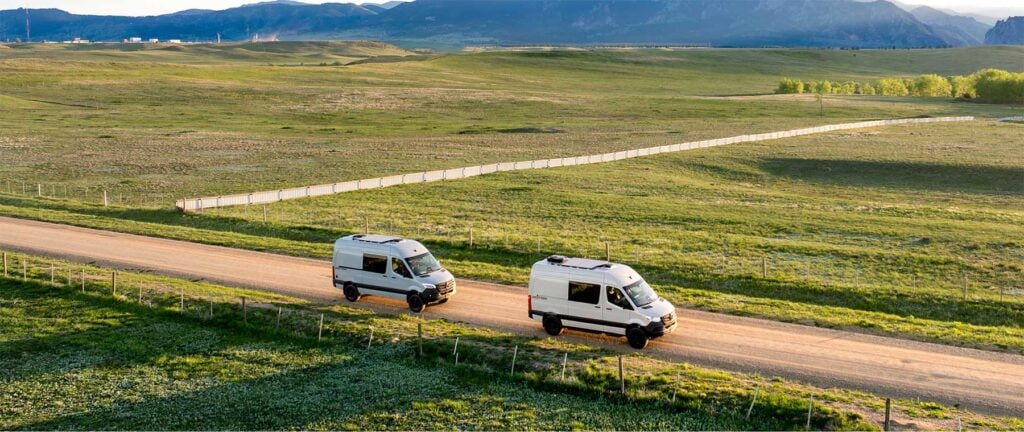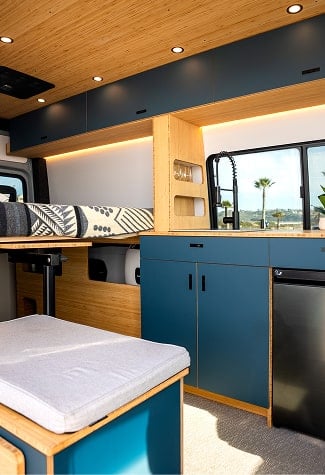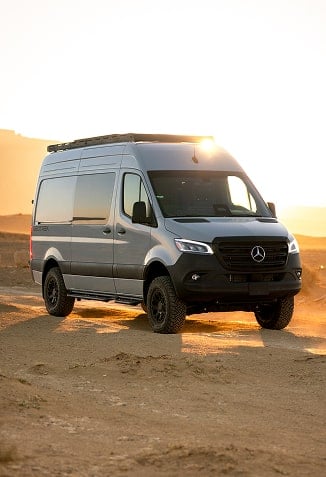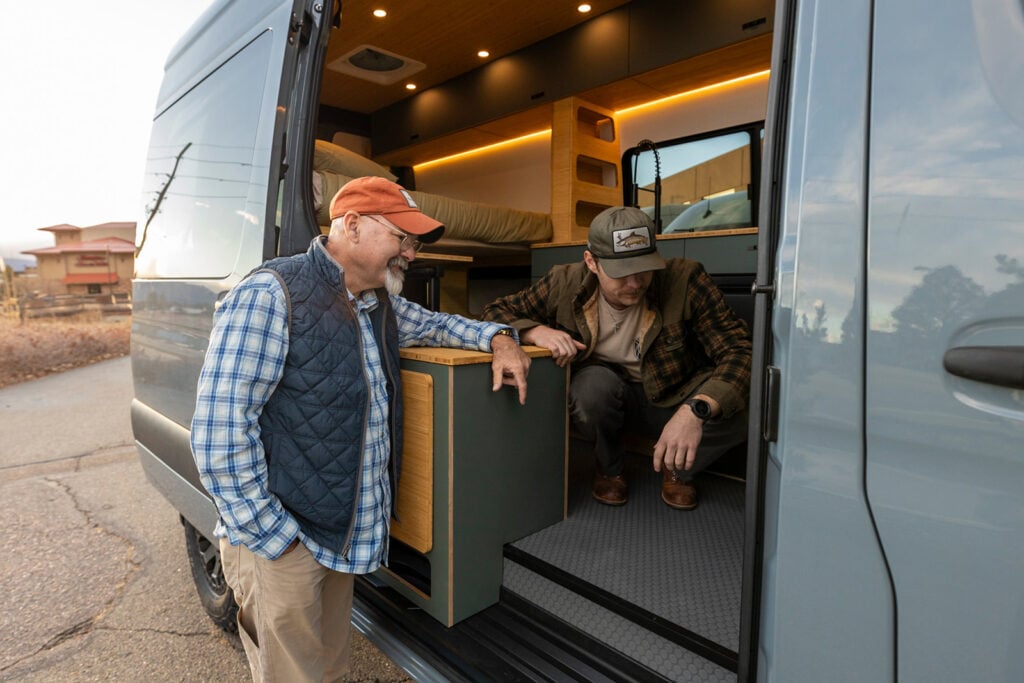You’re building your dream van. You’ve picked your layout, maybe even your color. But then the big question hits: Do I really need AWD… or is 2WD enough for how I actually travel?
It’s one of the most common questions we get — and one that sparks a lot of debate. So we took both setups to the trail, put them through mud, snow, and uneven terrain, and found out what really matters.
Same Sprinter 144 chassis. Same tires. Same trail. And a whole lot of mud.
Here’s what we learned, and what you should really consider before choosing your drivetrain.
What’s the Real Difference Between 2WD, AWD, and 4WD?
At a glance:
- 2WD sends power to the rear wheels (in a Sprinter). It’s lighter, more fuel-efficient, and typically cheaper to maintain.
- AWD automatically delivers power to all four wheels as needed. That translates to better traction in snow, mud, and unpredictable terrain—no manual switching required.
- 4WD is a more rugged, manually engaged system often found in true off-road vehicles. It’s heavier, more complex, and usually overkill for vanlife.
For most vanlifers, AWD offers plenty of capability without the bulk or hassle of full 4WD. That’s why both of our 2025 models—Bear Peak and Flatiron—come standard with AWD.
Where Are You Really Going?
This is the question that matters most.
If you’re spending 90% of your time on highways or paved roads, a 2WD setup might be all you need. It’s more affordable upfront and gets better fuel efficiency.

But if your travels involve:
- Public lands and backroads
- Snowy conditions
- Washboard or unmaintained forest roads
- Remote campsites or off-grid living
…then AWD can offer real advantages. It’s not about hardcore off-roading. It’s about staying in control when the weather turns, or when Google Maps gets a little ambitious.
AWD and Winter Travel
AWD shines in snow, slush, and icy conditions. Even with good tires, 2WD can struggle when roads get slick. AWD gives you more traction, especially on hills or uneven surfaces.
That said, most national parks and remote destinations are accessible with 2WD—as long as you know your limits and drive accordingly.
Cost Breakdown: AWD vs 2WD
Let’s talk numbers.
- AWD adds $8,000–$12,000 to the price tag.
- 2WD gets better gas mileage over long hauls.
- AWD requires more fluid changes and has more moving parts, which can mean slightly higher maintenance costs.
If you’re investing in a purpose-built van, it’s worth asking: will this drivetrain keep up with the way I want to travel?
We think so. Both of our 2025 models come with AWD standard, because we believe capability should come built-in—not bolted on later.
Availability and Resale Value
AWD Sprinters are in high demand — and often come with long factory waitlists, especially if you’re ordering direct. In some regions, the wait for an AWD chassis can stretch 6 months or more.
That’s part of why many vanlifers settle for 2WD: it’s easier to find, and there are more used options out there. But easier doesn’t always mean better — especially if you plan to travel in shoulder seasons, mountain weather, or remote terrain.
At Geotrek, we’ve already done the hard part.
Both the Bear Peak and Flatiron come pre-built on AWD Sprinter chassis — no waitlists, no multi-state searches, no compromises. You get capability and confidence, without the delay.
What We Found in Our Off-Road Test
We get the question all the time: Do I really need AWD, or is 2WD enough?
So we ran a real-world test, comparing a 2WD and AWD Sprinter van on the same off-road course: loose dirt, steep grades, muddy ruts, and snow patches.
The AWD Sprinter handled it all with confidence – climbing with control, staying planted even on uneven terrain, and requiring less speed or momentum to clear obstacles.
The 2WD held its own in light conditions, but struggled in deeper ruts and steeper climbs. It often needed more speed or multiple attempts to get through.
Bottom line? If you’re sticking to dry gravel roads or pavement, 2WD might be fine. But for backroads, shoulder seasons, or unpredictable conditions, AWD is worth it.
That’s why both our Bear Peak and Flatiron builds are designed exclusively on AWD Sprinter chassis — to handle the kinds of adventures our customers actually take.
Watch the side by side test:
So, Which One’s Right for You?
While a lot of vanlifers start by wondering if 2WD is “good enough,” most end up realizing that adventure rarely sticks to the pavement. One unexpected storm, a muddy forest road, or a snowy trailhead can change everything.
That’s why all of our 2025 models — Bear Peak and Flatiron — come standard on AWD Sprinter chassis. Because when you’re investing in your freedom, capability shouldn’t be optional.
You don’t have to overthink it. AWD gives you more flexibility, better traction, and fewer regrets — no matter where you end up.
Still weighing it out? Let’s talk through your routes, your trip style, and what will actually work best for you.

